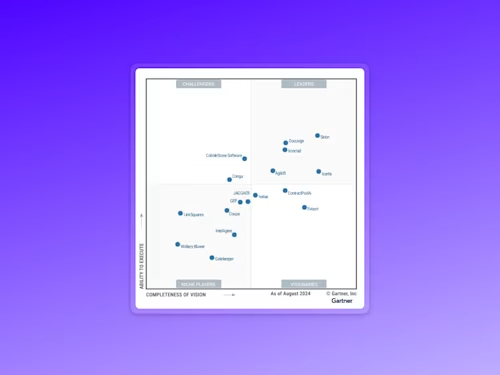Liveness Detection for ID Verification

Do you want to switch to our US site?
50% of bank account openings are abandoned. Digitize onboarding to streamline customer input and keep Canadian regulatory compliance simple and auditable.


Opening a new bank account for a customer should not involve days of information gathering, completing the application, verifying identity, printing or emailing, and waiting for the customer to sign and return the documents. Every passing day raises the risk of the customer becoming frustrated and abandoning the process. 50% of new bank account applications are started but never completed. Manual paperwork invites mistakes that incur further costs and delays. For larger banks, these opportunity and productivity costs can add up to millions of dollars annually.
Digitizing the customer onboarding process can help drive competitive advantage in banking by eliminating frustrations that send customers to your competitors. Focus your digital transformation efforts on these five principles to help you create a more frictionless and competitive customer onboarding experience.
Self-serve, remote-friendly digital banking services provide major benefits from the very beginning of customer onboarding. Some banking products involve complex application processes that may involve credit checks, income and employment verification, and beneficiary designation. When a process is complicated, consumers are more likely to need assistance from support teams, or worse, abandon the process altogether.
Banks can make these processes more intuitive and speedier with intelligent automation. Instead of providing a long PDF form to fill out and navigate (“If you answered yes to question 3B, skip to 11D.”), digital guided forms offer a “wizard”-style sequence of questions. Step-by-step instructions help users through the process and can omit questions based on previous answers – even providing selectors for acceptable responses and validating text input.
Guided forms are easily configured and are reusable. What’s more, they can be personalized to the client by needs and risk profile. Automating the input form reduces errors and speeds turnaround times. And when questioning is complete, the system can use the answers to automatically generate the consumer’s signature-ready agreement.
For the consumer, it’s a streamlined, mobile-friendly way through a complex application process. For banks, it’s a way to increase completion rates, reduce support costs, and reduce Not-In-Good-Order (NIGO) rates – which in turn, lowers the cost and time taken for manual review and remediation.
When it comes to account setup, the Government of Canada regulates the rules for consumer identity and privacy for banking. The key to meeting regulations is identifying the signer and attributing their signature to a unique electronic document. Phone and SMS authentication are common ways to verify identity, but financial institutions also have another powerful authentication option: digital ID Verification.
With a digital solution, customers can upload images of official IDs to prove their identity, and institutions can extract information from these IDs (name, address, photo) and store it in a system of record for audits or future verification purposes.
Digitizing the ID collection process has a couple of advantages. First, it reduces fraud. Financial associates are not necessarily trained at spotting fake or invalid ID cards. By automating the ID validation, financial institutions can ensure that IDs are authentic and take that burden off their employees. Second, digital ID collection eliminates the need for scanning and filing of paper copies of an ID. Instead, that information can be stored in a more secure, more accessible digital location. Since this can be done without anyone leaving their seat, digital ID collection improves the experience for customers who sign up at a retail branch or open a new account remotely.
Banks have invested hundreds of millions of dollars to digitally transform the way business is conducted. Yet, when customers want to expand the banking relationship – for example, to add loans, credit cards, or wealth management services – they often must re-enter information the bank already has about them. If the customer has to start from scratch, why not try another bank?
Digitized customer onboarding processes enable data to be pulled from Customer Relationship Management (CRM) systems like Salesforce or custom-built solutions to automatically populate contracts for additional services to expand the relationship. For consumers, it’s a remarkably right experience to have contract fields already filled in. It saves time and shows the value of the existing relationship. For banks, not only do completion rates go up, but errors from re-keyed data are eliminated.
Financial agreements can be complicated, involving terms and conditions that aren’t easily understood. Consumers need to agree to those terms in order to move a process forward. When they’re unsure about what they’re getting into, they hesitate – and may even look for another provider.
Digital contract technologies offer flexibility for how agreement details, legalese, and lengthy terms and conditions can be presented and reviewed with consumers. For example, mobile-friendly document generation tools make it possible for Canadian Credit Business Practices Regulations (CBPR Regs) to be presented in a variety of mobile-friendly formats, including collapsible sections, page breaks, and more. If your offering is a wall of text in a static PDF that requires a microscope to read on mobile devices, it’s time to change.
With increasingly digital and automated processes comes new challenges and opportunities for regulatory compliance. The right contract technology is built for both. By integrating specific information requests into the onboard sequence, Canadian banks can comply with the KYC (Know Your Customer), anti-money laundering (AML) and privacy regulations more easily and for less cost – and make the process faster for customers.
Full audit trails, available on demand, provide the ability to view and report on who gave consent and when, helping deliver evidence of regulatory compliance. Meanwhile, completed agreement documents are stored in a secure, high availability system and can be easily retrieved when needed. The underlying technology infrastructure must have the security, privacy, and reliability standards that meet or exceed PCI, SOC1 & SOC2 compliance. To regulators, the message should be clear: you are using new technologies not only to fulfill but to enhance consumer protections and regulatory compliance.
Related posts





